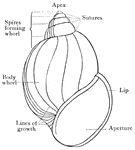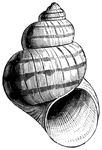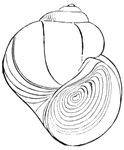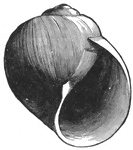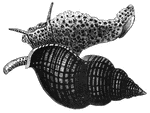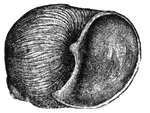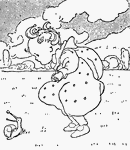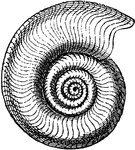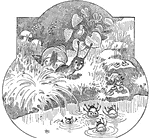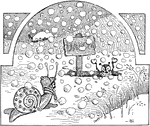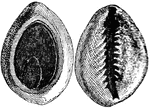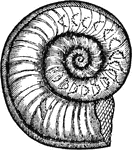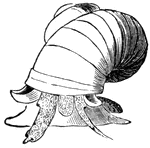
Pond Snail
A pond snail creeping. The largest part extending from the shell is the foot. The proboscis is in the…

Four and Twenty Tailors
Four and twenty tailors went to kill a snail. The best man amongst them durst not touch her tail. She…
!["[From left to right:] Snail-shell and Egg, Ostrea and Spondylus, Carinaria, Vitreous Carinaria." — Goodrich, 1859](https://etc.usf.edu/clipart/13900/13989/mollusca_13989_mth.gif)
Mollusca
"[From left to right:] Snail-shell and Egg, Ostrea and Spondylus, Carinaria, Vitreous Carinaria." —…
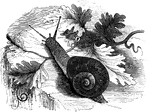
Common snail
"This is furnished with four tentacula, two of which are smaller than the others; at the end of these,…

Polished nerita
"The polished nerita, Nerita polita, is distributed through nearly all tropical seas." —…

Agate Shell
"A genus of land-snails, of the family Helicidæ. Typified by the large agate-shells of Africa."-Whitney,…

Apple Shell
"The species are numerous, and are chiefly found in the fresh waters of tropical and subtropical countries,…
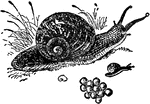
Snail
"Snail is the common name of gasteropodous mollusks. They feed chiefly on vegetable substances, though…
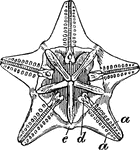
Clypeastrid
A family of irregular sea urchins, flattened into a discoidal or shield like shape, with a mouth central…

Snail
"Soft unsegmented bodies, bilaterally symmetrical, enveloped by a leathery mantle, which usually develops…

Ear
Interior of the ear. There is external to the head a wide-mouthed tube, or ear-trumpet (a), for catching…

Snail
A gasteropodous mollusk, differing from the slug in having a large, spiral shell. The species are very…

Snail
Diagram of the mouth of a snail, showing the lingual ribbon. br, brain; c, buccal cavity; co., caelom;…

Snail
Diagram of a dissection of the reproductive organs of a snail. a.g., albumen gland; c.d., common or…

Helix
Helix refers to a genus of snails. They are generally found in cool, damp environments, as they easily…

Snail Anatomy
"Anatomy of the Snail: a, the mouth; bb, foot; c, anus; dd, lung; e, stomach, covered above by the salivary…

English House Clock
"A front view of a common English house clock with the face taken off, showing the repeating or rack…

Helix Descrtorun
"Many species hibernate. The land-snails bury themselves in the ground, or conceal themselves under…
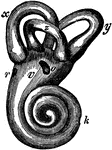
The Cochlea and Passages of the Ear
In this figure are shown the winding passages of the ear (the labyrinth of the ear). The middle part…

